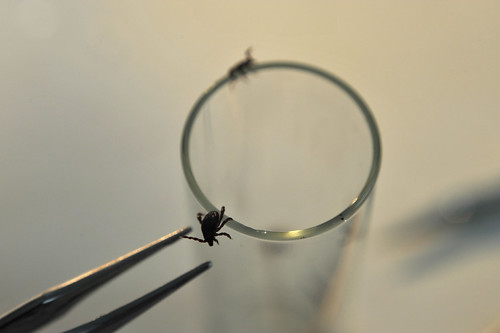
Tick research in ILRI’s biotechnology labs in Nairobi, Kenya. East Coast fever is a tick-transmitted disease that kills thousands of cows every year in Africa (photo credit: ILRI/David White).
East Coast fever is a lymphoproliferative disease caused by the tick-transmitted protozoan parasite Theileria parva. East Coast fever is one of the most serious cattle tick-borne diseases in sub-Saharan Africa.
We have previously demonstrated that three doses of the C-terminal part of the sporozoite protein p67 (p67C) adjuvanted with ISA206VG confers partial protection against East Coast fever at a herd level.
We have tested the efficacy of two doses of this experimental vaccine, as reducing the vaccination regimen would facilitate its deployment in the field.
We reconfirm that three antigen doses gave a significant level of protection to severe disease (46%, East Coast fever score < 6) when compared with the control group, while two doses did not (23%).
Animals receiving three doses of p67C developed higher antibody titres and CD4+ T-cell proliferation indices, than those which received two doses.
A new panel of immune parameters were tested to identify factors correlating with protection: CD4+ proliferation index, total IgG, IgG1, IgG2 and IgM half maximal titres and neutralization capacity of the sera with and without complement.
We show that some of the cellular and humoral immune responses provide preliminary correlates of protection.
Read the open access journal article
Citation
Lacasta, A., Mwalimu, S., Kibwana, E., Saya, R., Awino, E., Njoroge, T., Poole, J., Ndiwa, N., Pelle, R., Nene, V. and Steinaa, L. 2018. Immune parameters to p67C antigen adjuvanted with ISA206VG correlate with protection against East Coast fever. Vaccine 36(11): 1389–1397. http://hdl.handle.net/10568/91022